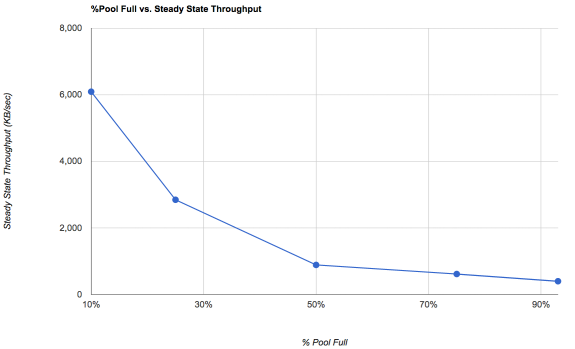vonion
Cadet
- Joined
- Feb 24, 2018
- Messages
- 4
I created zvol for iscsi pupose, the size is 11.1TiB, which also present to my ESX host as 11TB. After I ported data into the datastore, now it used 8.4TB or 2.6TB available. However, on FreeNAS GUI volume page, it shows I have 7.7TiB available, which makes sense since I have a compression ratio of 1.64x. But it seems from ESX side I will never benefit from the compression since it calculates the actual data usage instead of compressed usage.
I think all SAN works this way, but on other SAN I'm able to oversubscribe to make sure of the dedup or compression, however in FreeNAS 11.1 is the limit and won't let me go over.
*I have zpool using 9 x SM863a 1.92TB in raid-z2

I think all SAN works this way, but on other SAN I'm able to oversubscribe to make sure of the dedup or compression, however in FreeNAS 11.1 is the limit and won't let me go over.
*I have zpool using 9 x SM863a 1.92TB in raid-z2

